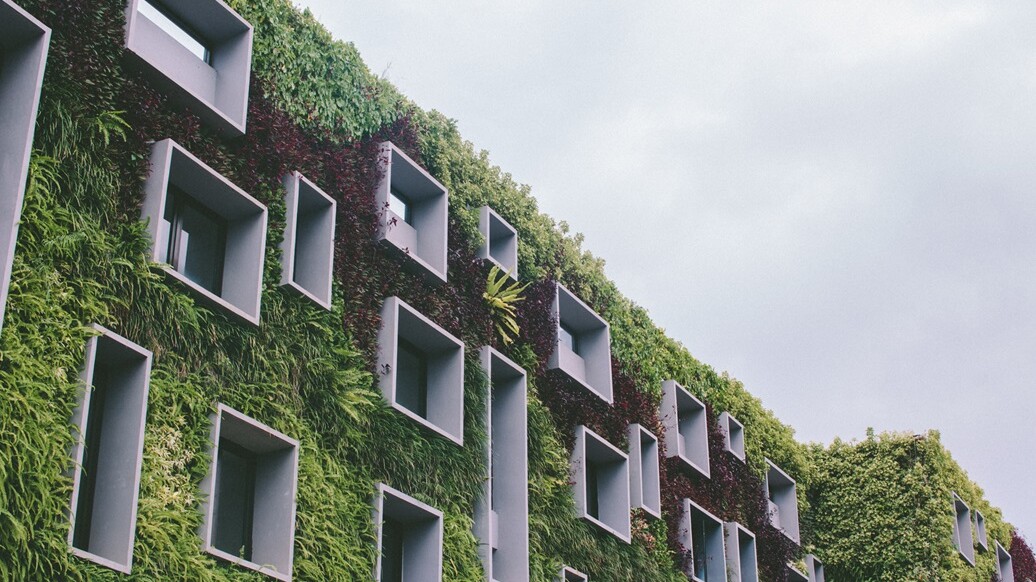
Energy-efficient house vs. passive house: differences and possibilities for modern technology use
Contents
- Energy-efficient house vs. passive house: differences and possibilities for modern technology use
- Energy-efficient house vs. passive house – key differences
- Heating in energy-efficient and passive houses
- U-Value in energy-efficient and passive houses
- The application of liquid crystal film in energy-efficient and passive buildings
- Comparison of passive and energy-efficient houses – which one to choose?
- Liquid crystal film – the future of modern buildings
Energy-efficient house vs. passive house – key differences
Passive houses and energy-efficient houses are two popular concepts in construction, differing in their approach to energy management.
- Passive house: Minimizes energy demand through high thermal insulation, heat recovery ventilation, and optimal use of sunlight. It is characterized by extremely low energy consumption, with annual demand at just 15 kWh/m².
- Energy-efficient house: Employs modern technologies and renewable energy sources, such as solar panels, to reduce heat loss and optimize costs. Its annual energy demand ranges from 40 to 70 kWh/m².
Both types of buildings benefit from advanced window technologies, such as triple-glazed windows filled with insulating gas, enhancing energy efficiency.
Heating in energy-efficient and passive houses
Heating systems in passive and energy-efficient houses differ primarily in how heat is sourced and utilized:
- Passive house: Relies on minimal external heating sources thanks to efficient insulation and passive solar energy use. Heat generated by residents and household appliances often suffices to warm the interior.
- Energy-efficient house: Utilizes advanced heating systems, such as heat pumps, to reduce operational costs. With technologies like heat recovery (e.g., through ventilation systems), energy is used efficiently but to a greater extent than in passive houses.
U-Value in energy-efficient and passive houses
The U-value, which measures the thermal insulation of building materials, plays a critical role in both types of buildings:
- Passive house U-value: The maximum value for walls is 0.15 W/(m²·K), and for windows, 0.80 W/(m²·K). These low values are achieved through the use of advanced insulating materials.
- Energy-efficient house U-value: Allows slightly higher values, such as 0.20 W/(m²·K) for walls. While the standards are less stringent, they still significantly outperform those of traditional buildings.
Focusing on U-values in energy-efficient and passive houses helps reduce the need for heating and cooling, resulting in lower operating costs.

The application of liquid crystal film in energy-efficient and passive buildings
Liquid crystal film (smart glass) is a groundbreaking technology ideally suited for passive and energy-efficient homes. It enables dynamic control over the amount of light and heat entering through windows.
- Passive house: The film reduces heat loss during winter and prevents overheating in summer, enhancing energy efficiency and thermal comfort. Advanced solutions like solar control film provide additional protection against excessive heat, further boosting the energy performance of buildings.
- Energy-efficient house: It allows for adjusting natural light levels and reducing the need for artificial lighting, supporting better energy balance management.
Liquid crystal film aligns perfectly with the principles of sustainable architecture, where innovative solutions play a vital role in promoting environmental responsibility and energy conservation.
Comparison of passive and energy-efficient houses – which one to choose?
Passive houses offer maximum energy efficiency and minimal operating costs, but their construction requires higher financial investment and precise execution. Energy-efficient houses are more flexible in design and less expensive to build, although their operational costs are slightly higher.
The choice between the two depends on the investor’s needs and budget. For those prioritizing the lowest running costs, a passive house is the ideal solution. However, for investors with a moderate budget, an energy-efficient house presents a more accessible option.
Liquid crystal film – the future of modern buildings
SONTE film is an innovative solution that combines functionality with environmental consciousness. Its ability to dynamically regulate the amount of light and heat entering a space makes it a perfect fit for modern buildings, such as passive and energy-efficient homes. This technology supports energy savings, reduces heating and cooling costs, and enhances the comfort of occupants.
The application of liquid crystal film demonstrates how advanced technologies can simultaneously improve building functionality and reduce environmental impact. Smart glass sets new standards in construction, blending energy efficiency with aesthetics and user convenience.
See more
Intelligent solutions
Exploring window films – what makes liquid crystal film superior?
Dive into the world of sun-blocking films, isothermal films, UV protection films, photochromic films, and especially the innovative SONTE liquid crystal film. Discover how the SONTE liquid crystal film combines the advantages of other films, offering unparalleled control over privacy and light in your home or office.
Safety and hygiene
How to maintain cleanliness in the office? Examples of modern solutions
Learn how to keep your office clean and why a tidy workspace boosts health and productivity. Discover modern solutions!
Unusual spaces
Glass-walled hotel interiors – how does SONTE film combine aesthetics with privacy?
Glass-walled hotel interiors and their privacy - discover how SONTE film seamlessly blends these two aspects, offering a modern and discreet solution for hotels wishing to preserve their guests' privacy.